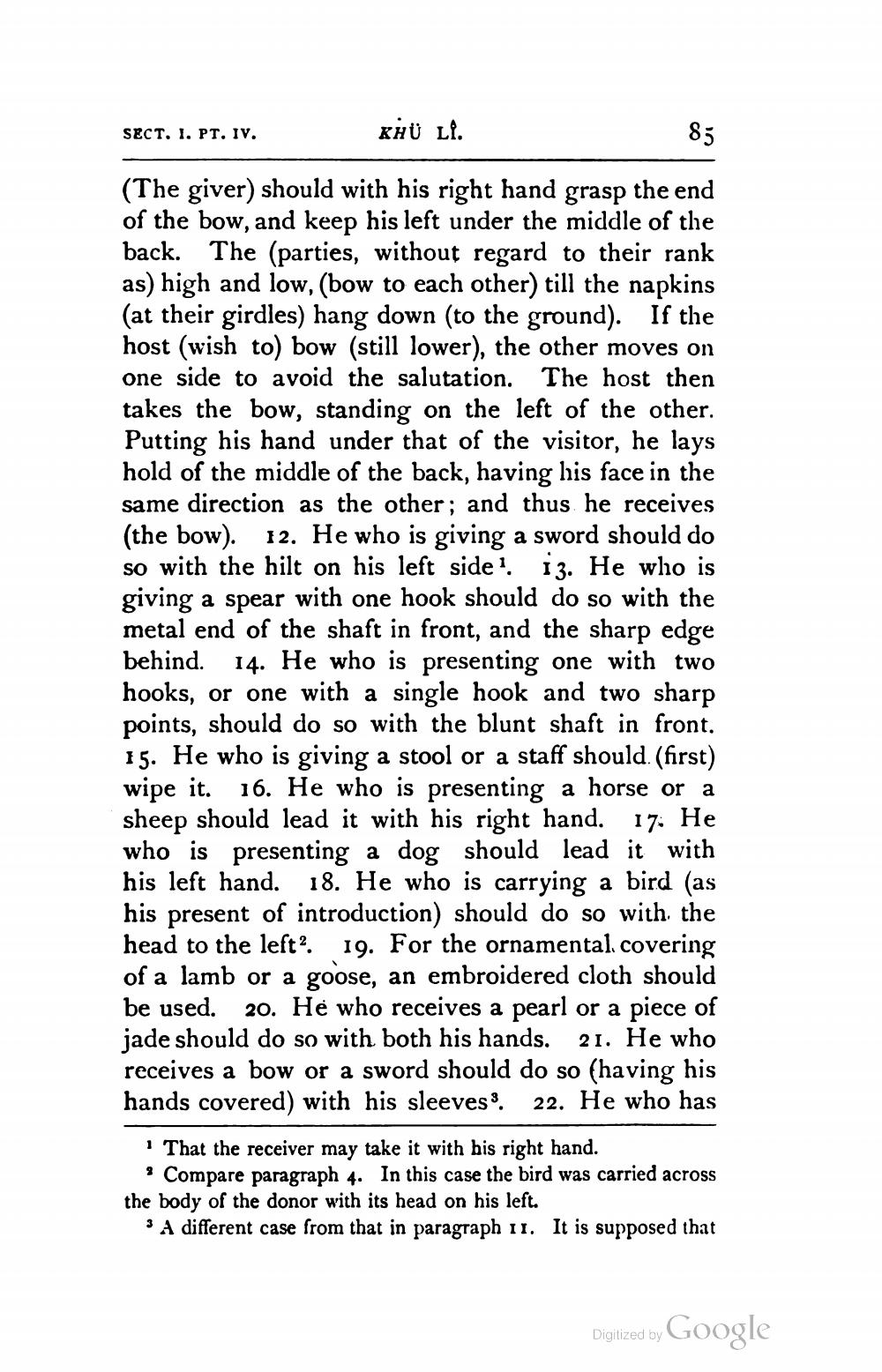________________
SECT. I. PT. IV.
KHU LI.
(The giver) should with his right hand grasp the end of the bow, and keep his left under the middle of the back. The (parties, without regard to their rank as) high and low, (bow to each other) till the napkins (at their girdles) hang down (to the ground). If the host (wish to) bow (still lower), the other moves on one side to avoid the salutation. The host then takes the bow, standing on the left of the other. Putting his hand under that of the visitor, he lays hold of the middle of the back, having his face in the same direction as the other; and thus he receives (the bow). 12. He who is giving a sword should do so with the hilt on his left side 1. 13. He who is giving a spear with one hook should do so with the metal end of the shaft in front, and the sharp edge behind. 14. He who is presenting one with two hooks, or one with a single hook and two sharp points, should do so with the blunt shaft in front. 15. He who is giving a stool or a staff should. (first) wipe it. 16. He who is presenting a horse or a sheep should lead it with his right hand. 17. He who is presenting a dog should lead it with his left hand. 18. He who is carrying a bird (as his present of introduction) should do so with the head to the left? 19. For the ornamental, covering of a lamb or a goose, an embroidered cloth should be used. 20. He who receives a pearl or a piece of jade should do so with both his hands. 21. He who receives a bow or a sword should do so (having his hands covered) with his sleeves S. 22. He who has
1 That the receiver may take it with his right hand.
? Compare paragraph 4. In this case the bird was carried across the body of the donor with its head on his left.
A different case from that in paragraph 11. It is supposed that
Digitized by Google




